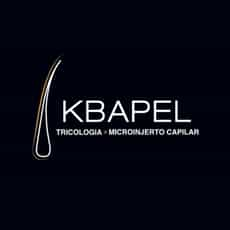A Guide to Hair Transplant Cost in Dominican Republic

Considering a hair transplant is a significant decision, and understanding costs is often the first step. The Dominican Republic is a popular destination for medical tourism, offering affordable yet quality hair restoration. This guide answers how much a hair transplant costs in the Dominican Republic, detailing price factors, procedure types, and what to expect.
The Dominican Republic combines competitive pricing, experienced surgeons, and modern facilities, making it an attractive option for hair restoration. While exact costs vary, they are significantly lower than in many Western countries, without compromising quality. We'll cover everything from consultation to recovery, providing essential information for your hair transplant journey.
How Much Does a Hair Transplant Cost in the Dominican Republic?
A hair transplant in the Dominican Republic is generally much more affordable than in the US, Canada, or Europe. Expect to pay between $2,500 and $5,000 for a complete procedure. For instance, a common FUE (Follicular Unit Extraction) procedure with 2,000 grafts averages about $3,010. This affordability attracts many international patients. The final price can fluctuate based on the clinic, surgeon's experience, extent of hair loss, and technique used. Many clinics offer comprehensive packages including surgery, accommodation, transfers, and post-operative care, adding value and convenience.
What Factors Influence the Cost of a Hair Transplant in the Dominican Republic?
Key factors affecting hair transplant cost in the Dominican Republic include:
- Number of Grafts: The primary cost driver. More grafts mean higher prices. Clinics often quote per graft or offer graft-based packages.
- Hair Transplant Technique:
- FUE: More advanced, minimally invasive, individual follicle extraction. Generally costs more, offers quicker recovery, and minimal linear scarring.
- FUT: Strip method, involves removing a skin strip. Less expensive but leaves a linear scar.
- Surgeon's Experience: Highly experienced and reputable surgeons, especially those with international certifications, may charge more, reflecting better results.
- Clinic's Facilities: Modern clinics with advanced technology in prime locations might have higher prices due to overheads, though still more affordable than many Western countries.
- Included Services: All-inclusive packages covering pre-op tests, surgery, medications, follow-ups, accommodation, and transfers can offer significant savings and convenience.
What is the Average Cost of FUE Hair Transplant in the Dominican Republic?
The FUE (Follicular Unit Extraction) technique is popular in the Dominican Republic due to its minimal invasiveness and lack of linear scarring. For a typical FUE hair transplant of around 2,000 grafts, the average cost is approximately $3,010. This makes the Dominican Republic a cost-effective global destination for this advanced hair restoration method. Total cost varies with the number of grafts needed. Extensive hair loss requiring more grafts will increase the price. Clinics often have tiered pricing where the per-graft cost may decrease with higher graft counts. Always get a personalized quote after consultation.
What is the Average Cost of FUT Hair Transplant in the Dominican Republic?
The FUT (Follicular Unit Transplantation) method is typically less expensive than FUE due to quicker harvesting. While specific average costs for FUT are less highlighted, expect prices in the Dominican Republic to range from $2,000 to $4,000 for a significant number of grafts. FUT involves removing a strip of scalp, dissecting it into individual follicular units, and then transplanting them. Despite leaving a linear scar, it's a budget-friendly hair transplant option for those needing many grafts.
Is Hair Transplant Safe in the Dominican Republic?
The safety of hair transplant procedures in the Dominican Republic is a common concern. Many clinics maintain high standards and employ experienced, board-certified surgeons. To ensure a safe procedure, it's crucial to:
- Research Clinics: Look for international accreditations, positive patient reviews, and transparent surgeon qualifications.
- Verify Surgeon Credentials: Confirm board certification and extensive hair restoration experience.
- Modern Facilities: Choose clinics with modern equipment and strict sterilization protocols.
- Understand Risks: Be aware of potential risks like infection, bleeding, or poor graft survival, which reputable clinics will discuss and manage.
Many well-regarded clinics in the Dominican Republic attract global patients due to quality and affordability, making informed choice key.
How Long Does a Hair Transplant Procedure Take in the Dominican Republic?
The hair transplant procedure itself takes 4 to 8 hours, depending on grafts and technique (FUE is longer). This is usually a single-day procedure. However, your total stay in the Dominican Republic will be longer to allow for pre-op consultations, the procedure, and initial post-op checks. Most patients plan a 3 to 7-day trip, ensuring sufficient time for healing and aftercare instructions before returning home.
What is the Recovery Time for a Hair Transplant in the Dominican Republic?
Hair transplant recovery involves stages, with initial healing being quick and full results appearing later.
- First Few Days (1-5 days): Swelling, scabs, mild discomfort (managed with meds). Gentle scalp washing instructions provided.
- First 1-2 Weeks: Most scabs fall off; itching is common. Light activities can resume, avoid strenuous exercise.
- 2-4 Weeks (Shock Loss): Transplanted hairs shed, a normal part of the process before new growth.
- 3-4 Months: New, fine hairs emerge.
- 6-12 Months: Hair grows thicker and stronger; significant density appears.
- 12-18 Months: Final results are visible, with hair fully matured and blended.
Following post-operative care instructions is crucial for optimal healing and results.
What Should I Expect During a Hair Transplant Consultation in the Dominican Republic?
A hair transplant consultation is a vital first step. Expect:
- Scalp Examination: Assessment of hair loss, donor area quality, and scalp health.
- Medical History: Discussion of health, medications, and family hair loss history.
- Goals Discussion: Communicate your desired outcome; surgeon will set realistic expectations.
- Technique Explanation: Surgeon explains FUE/FUT and recommends the best method for you.
- Treatment Plan: A customized plan, including estimated grafts and approach.
- Cost Estimate: Detailed breakdown of cost and package inclusions (surgery, meds, follow-ups, accommodation, transfers).
- Q&A: Opportunity to ask questions and voice concerns.
Many clinics in the Dominican Republic offer free online consultations for initial assessment and cost estimates before travel.
What are the Benefits of Getting a Hair Transplant in the Dominican Republic?
Choosing the Dominican Republic for your hair transplant offers several advantages:
- Cost-Effectiveness: Significantly more affordable than in many Western countries, often saving 50-75%.
- Experienced Surgeons: A growing number of skilled, internationally trained, and certified hair restoration surgeons.
- Modern Facilities: State-of-the-art clinics adhering to international standards.
- Medical Tourism: Combine your procedure with a relaxing vacation for a pleasant recovery.
- Accessibility: Easy travel from North America with direct flights.
- Natural Results: Reputable clinics focus on natural-looking, seamlessly blended results.
Are There Any Risks Associated with Hair Transplants in the Dominican Republic?
Hair transplants carry potential risks, similar globally. In the Dominican Republic, these include:
- Infection: Rare, minimized by hygiene and post-op care.
- Bleeding: Minor bleeding is normal; excessive bleeding is rare.
- Swelling/Bruising: Common, temporary forehead/eye swelling.
- Numbness/Tingling: Temporary nerve irritation.
- Poor Graft Survival: Grafts may not survive due to improper handling, poor surgical technique, infection, or patient non-compliance.
- Scarring: FUE leaves tiny dots; FUT leaves a linear scar. Excessive scarring can occur if not performed correctly.
- Unnatural Results: Poor hairline design or incorrect graft placement can lead to unnatural appearance.
- "Shock Loss": Temporary shedding of existing hair.
Mitigate risks by choosing a reputable clinic with experienced surgeons prioritizing safety and international standards.
What Post-Operative Care is Required After a Hair Transplant in the Dominican Republic?
Proper post-operative care is vital for hair transplant success. Instructions from your clinic typically include:
- Initial Protection: Avoid touching grafts; elevate head (especially when sleeping) for 24-48 hours.
- Gentle Washing: Use special shampoo/lotion (starting Day 2-3) to remove scabs without dislodging grafts.
- Medications: Take prescribed antibiotics and pain relievers.
- Activity Restrictions: Avoid strenuous activity, heavy lifting, and sweating for 1-2 weeks. No swimming/saunas for several weeks.
- Sun/Trauma Protection: Shield scalp from direct sun (wear loose hat); avoid scratching/rubbing.
- Diet/Lifestyle: Maintain healthy diet, stay hydrated; avoid smoking/alcohol.
- Follow-ups: Attend all scheduled check-ups.
Strict adherence to these guidelines ensures optimal healing and results.
How to Choose the Best Hair Transplant Clinic in the Dominican Republic?
Choosing the right clinic is paramount for a successful hair transplant. Consider:
- Surgeon's Qualifications: Look for board-certified plastic surgeons or dermatologists with extensive hair restoration experience and international society memberships (e.g., ISHRS).
- Clinic Accreditations: Ensure adherence to international safety and hygiene standards.
- Patient Reviews: Check independent platforms for reviews and before-and-after photos.
- Transparent Pricing: Demand clear, detailed cost estimates with no hidden fees, understanding all inclusions.
- Comprehensive Consultation: The clinic should thoroughly assess your hair loss and discuss goals and techniques.
- Quality Aftercare: Inquire about post-operative plans, medications, and follow-ups.
- Communication: Ensure clear communication and language support.
Thorough research helps you choose a clinic that meets your needs and expectations.
What is the Success Rate of Hair Transplants in the Dominican Republic?
The success rate of hair transplants in the Dominican Republic is comparable to other leading countries, given experienced surgeons and reputable clinics. Success is defined by graft survival and natural appearance.
- Graft Survival: High-quality hair transplants typically see 85% to 95% graft survival, meaning most transplanted follicles grow.
- Natural Appearance: Skilled surgeons ensure natural-looking results with proper hairline design, angle, and density.
- Patient Satisfaction: High satisfaction results from achieving desired density and improved appearance.
Success depends on surgeon expertise, donor hair quality, patient health, and adherence to aftercare. Choosing a clinic with a proven track record is key.
How Many Grafts Do I Need for a Hair Transplant?
The number of grafts needed for a hair transplant is highly individual, depending on hair loss extent and desired density. A surgeon's consultation is essential for an accurate number. General guidelines:
- Minor Hairline Recession/Thinning (Norwood I-II): Typically 500 to 1,500 grafts.
- Moderate Hair Loss (Norwood III-IV): Often needs 1,500 to 2,500 grafts.
- Extensive Hair Loss (Norwood V-VII): Can require 3,000 to 5,000+ grafts, sometimes in multiple sessions.
The surgeon uses standardized scales (e.g., Norwood Scale) to classify hair loss and estimate grafts from your donor area for natural results, also considering donor hair quality.
What is the Difference Between FUE and FUT Hair Transplant?
FUE (Follicular Unit Extraction) and FUT (Follicular Unit Transplantation) are the main hair transplant techniques. Both move hair follicles, but differ in harvesting.
| Feature | FUE (Follicular Unit Extraction) | FUT (Follicular Unit Transplantation) |
|---|---|---|
| Harvesting Method | Individual follicles extracted with a micro-punch. | Strip of scalp surgically removed. |
| Scarring | Tiny, scattered dot-like scars, usually imperceptible with short hair. | Linear scar in donor area, visible if hair is very short. |
| Recovery Time | Quicker recovery, less discomfort. | Slightly longer recovery due to incision. |
| Invasiveness | Less invasive. | More invasive. |
| Number of Grafts | Good for small to large sessions; longer for very large numbers. | Can yield many grafts in one session; efficient for extensive loss. |
| Cost | Generally more expensive per graft due to meticulous extraction. | Generally less expensive per graft. |
| Hair Shaving | Often requires shaving donor (and sometimes recipient) area. | Donor area can often be kept longer, concealing strip removal. |
Choice depends on hair loss, donor characteristics, scar preference, and budget. Your surgeon will recommend the best method.
Can Women Get Hair Transplants in the Dominican Republic?
Yes, women can get hair transplants in the Dominican Republic. Clinics offer tailored solutions for female hair thinning/loss, often involving:
- Careful Diagnosis: Identifying the cause of hair loss is crucial.
- Specialized Techniques: FUE is common. Unshaven FUE or DHI (Direct Hair Implantation) minimize shaving for discretion.
- Density & Naturalness: Focus on increasing density in thinning areas (e.g., part line) for a natural look.
- Hairline Restoration: Effective for receding hairlines or thinning temples.
Women should consult a surgeon experienced in female hair restoration to discuss their specific needs and treatment plan.
What is the Best Age for a Hair Transplant?
The "best" age for a hair transplant depends on individual hair loss progression. It's generally advised to wait until your hair loss pattern has stabilized.
- Not Too Early (Under 25): Discouraged, as hair loss patterns may not be stable, potentially leading to unnatural results later.
- Ideal Age (Late 20s to 30s): Hair loss is usually more defined and stable, allowing for effective, long-lasting hairline design.
- Older Ages (40s, 50s+): Highly successful if donor area is healthy and hair loss is stable.
Stability of hair loss, not just age, is the most important factor. A consultation determines suitability and optimal timing.
Does Health Insurance Cover Hair Transplants in the Dominican Republic?
Generally, health insurance does not cover hair transplant procedures, whether in the Dominican Republic or elsewhere. They are classified as cosmetic, improving appearance rather than treating a medical condition. Rare exceptions exist for medically necessary cases, like hair loss from burns, trauma, or reconstructive purposes. These require extensive documentation and pre-approval, and are highly uncommon. For most genetic hair loss, the procedure is an out-of-pocket expense, making the Dominican Republic's affordability attractive.
How Long Do Hair Transplant Results Last?
Hair transplant results are permanent. Follicles are harvested from DHT-resistant areas (back/sides of scalp). When transplanted, they retain this resistance, growing hair for a lifetime. However:
- Existing Hair: Native hair may still thin if not DHT-resistant; touch-ups might be needed if original hair loss progresses.
- Aging: All hair, including transplanted, may naturally thin with age, but won't fall out due to genetic balding.
- Proper Care: Following post-transplant care ensures longevity.
A hair transplant offers a long-term, virtually permanent solution for hair restoration.
What is the Minimum Number of Grafts for a Hair Transplant?
The minimum number of grafts for a hair transplant is highly individual. For minor cases, it can be relatively low:
- Small Areas/Hairline Refinement: As few as 500 to 800 grafts for subtle adjustments or localized thinning.
- Eyebrow/Beard Transplants: Typically 200 to 600 grafts, depending on desired density.
It's rare for scalp hair restoration to involve fewer than 500 grafts for a noticeable improvement. A consultation with a specialist is crucial to determine your specific needs.
Can I Get a Hair Transplant if I Have Thin Hair?
Yes, you can get a hair transplant if you have thin hair. Many seek transplants to increase density in thinning areas rather than completely bald ones. The goal is to:
- Increase Density: Transplanting healthy follicles boosts overall hair density.
- Cover Scalp Visibility: Added density reduces scalp visibility for a fuller look.
- Reinforce Existing Hair: Transplanted hair strengthens existing thin hair.
Success depends on sufficient healthy donor hair, surgeon's precision (to avoid damaging existing follicles), and realistic expectations. A consultation determines suitability and achievable density.
What is the Difference Between Hair Transplant and Hair Restoration?
Hair transplant is a specific surgical procedure, while hair restoration is a broader term for all hair loss treatments.
- Hair Transplant: Surgical procedure moving hair follicles from a donor to a balding area. A permanent solution for genetic hair loss (e.g., FUE, FUT).
- Hair Restoration: Umbrella term for surgical and non-surgical methods to address hair loss or promote growth. Non-surgical methods include:
- Medications: Minoxidil, Finasteride.
- PRP Therapy: Injections of concentrated platelets.
- Low-Level Laser Therapy (LLLT): Laser light to stimulate follicles.
- Scalp Micropigmentation (SMP): Cosmetic tattooing creates the illusion of hair follicles.
- Supplements/Shampoos: Support hair health, but less effective for significant loss.
A hair transplant is a form of hair restoration, but not all hair restoration is surgical. Many benefit from combined approaches.
Are Hair Transplants Painful?
Hair transplant procedures are generally not painful during surgery due to local anesthesia. The scalp is numbed, so you won't feel pain during follicle extraction and implantation.
- During Procedure: You might feel pressure or mild sensation during anesthetic injections. Once numb, the procedure is comfortable; many patients relax or sleep.
- After Procedure: Mild discomfort, soreness, or tenderness may occur once anesthesia wears off, manageable with prescribed pain relievers.
- Recovery Discomfort: Temporary tightness, numbness, or itching is common during healing, usually subsiding within days to weeks.
Severe pain is uncommon; most patients find the experience tolerable.
What is the Aftercare for a Hair Transplant?
Proper aftercare is vital for hair transplant success. Instructions from your clinic typically include:
- Initial Protection: Avoid touching grafts; elevate head (especially when sleeping) for 24-48 hours.
- Gentle Washing: Use special shampoo/lotion (starting Day 2-3) to remove scabs without dislodging grafts.
- Medications: Take prescribed antibiotics and pain relievers.
- Activity Restrictions: Avoid strenuous activity, heavy lifting, and sweating for 1-2 weeks. No swimming/saunas for several weeks.
- Sun/Trauma Protection: Shield scalp from direct sun (wear loose hat); avoid scratching/rubbing.
- Diet/Lifestyle: Maintain healthy diet, stay hydrated; avoid smoking/alcohol.
- Follow-ups: Attend all scheduled check-ups.
Strict adherence to these guidelines ensures optimal healing and results.
Can I Travel After a Hair Transplant?
Yes, you can travel after a hair transplant, as many do for procedures in the Dominican Republic. However, consider:
- Initial Healing: Stay 3-7 days post-procedure for graft vulnerability, swelling reduction, first wash, and aftercare instructions.
- Air Travel: Pressure changes can exacerbate swelling; long flights might be uncomfortable. Wear a loose hat for protection.
- Long-Haul Flights: For very long flights, waiting 7-10 days for more healing is advised.
A week-long trip typically allows ample time for the procedure and crucial initial recovery before returning home. Always consult your surgeon for specific travel recommendations.
What are the Alternatives to a Hair Transplant?
While hair transplant is the most effective permanent solution for genetic hair loss, several alternatives can manage hair loss or create fuller hair appearance. These are generally non-surgical:
- Medications: Minoxidil (topical) and Finasteride (oral) can slow loss and stimulate regrowth, requiring consistent use.
- PRP Therapy: Injections of concentrated platelets from your blood stimulate follicles.
- Low-Level Laser Therapy (LLLT): Devices use laser light to stimulate hair growth.
- Scalp Micropigmentation (SMP): Cosmetic tattooing creates the illusion of hair follicles.
- Hair Fibers/Concealers: Temporary cosmetic products for fuller appearance.
These alternatives can be effective for certain hair loss types or as complementary treatments. Consult a specialist to determine suitable options.
Can Hair Transplants Fail?
Though generally successful, hair transplants can "fail" if desired outcomes aren't met. This can involve:
- Poor Graft Survival: Grafts may not survive due to improper handling, poor surgical technique, infection, or patient non-compliance with aftercare.
- Unnatural Results: Can occur from poor hairline design, incorrect graft angle/direction, or insufficient density.
- Continued Hair Loss: Transplanted hair is permanent, but existing native hair may still thin if the underlying condition isn't managed, leading to patchiness.
To minimize failure risk, choose an experienced, reputable surgeon, follow all instructions diligently, and have realistic expectations.







.png)
.png)
.png)
.png)






Share this listing